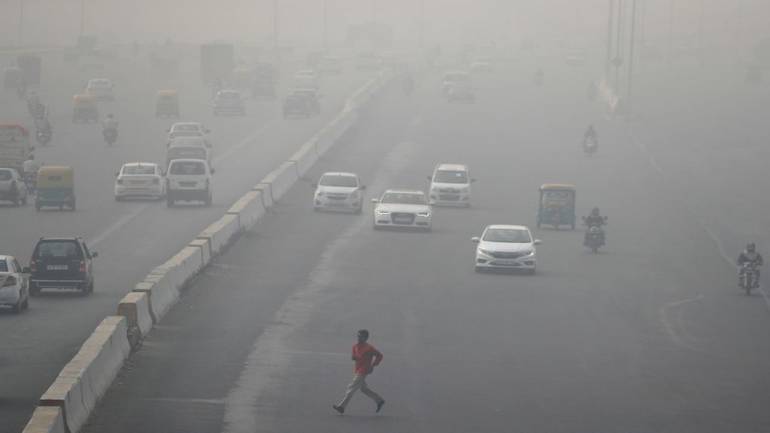
Infants, elderly, pregnant women face greater threat from air pollution: Report

Even though air pollution is a universal health problem that affects everyone, the risks are not evenly distributed amongst the population with some groups of people at greater risk of harm. Infants, citizens above 65 years of age and pregnant women are more likely to be exposed to high pollutant concentrations, according to the latest Greenpeace report.
Greenpeace India’s latest report – ‘Different Air Under One Sky: The Inequity Air Research’ — investigates air pollution in eight countries, including India, by assessing the exposure to air pollution experienced by vulnerable groups of people and the population’s access to air quality monitoring stations.
The report highlights how not only groups known to be particularly at risk from air pollution — infants, elderly citizens and pregnant women — are more likely to be exposed to high pollutant concentrations, but they also have less access to local air quality data when compared to the total population. Effects of air pollution on infants include risk of preterm birth, respiratory diseases such as asthma and increased risk of mortality. In elderly people, effects include increased risk of mortality, respiratory infections and worsening of existing medical conditions.
Also read: No data on direct correlation between health and air pollution: Govt
New WHO guideline
In 2021, the World Health Organization (WHO published new air quality guidelines designed to protect public health. The guidelines were derived using the latest evidence on the adverse health effects of air pollution.
In particular, the new guidelines recognise that chronic exposure to even low concentrations of fine particulate matter is responsible for a significant burden of disease. Particulate matter is pollution in the form of small solid or liquid particles suspended in the air. PM2.5 refers to any particles that measure 2.5 μm or less in diameter, much finer than a human hair.
India has worst air quality
According to the report, India has one of the worst air quality with 95 per cent of the total population exposed to PM2.5 concentrations over 25 µg/m3. This is five times the WHO’s annual average guideline. The report points out that 57 per cent of the total population of India is exposed to PM2.5 concentrations over 50 µg/m3. In nine states, more than 90 per cent of the population are exposed to PM2.5 concentrations over 50 µg/m3.
The highest concentrations occur in the North where desert dust adds significantly to the pollution burden, with National Capital Territory (NCT) of Delhi and Bihar topping the list. Jammu and Kashmir was the only state in India to have some areas where air quality met the WHO guideline for annual average PM2.5. However, less than 1 per cent of the state’s population lives in this area.
Among elderly citizens, 53 per cent are exposed to PM2.5 concentrations over 50 µg/m3 and 61 per cent of infants and 62 per cent of pregnant women live in such areas, compared to 57 per cent for the total population.
Inaccessible local air quality data
As far as access to local air quality data is concerned, 70 per cent of India’s population does not have access to an air quality station within 25 km. While in Goa, Lakshadweep and Andaman and Nicobar, the whole population lacks access to an air quality station within 25 km, Chandigarh and the NCT of Delhi provide air quality stations within 5 km to over 90 per cent of their population.
The report also highlights the need to revise India’s current National Ambient Air Quality Standards (NAAQS) based on the latest scientific insight. Additionally, the National Clean Air Programme and the activities planned under it — such as extension of public transport in cities and electrification of government-run public transport – also needs to be properly implemented without any further delays.
“The findings of this report are eye-opening. Considering the size of India, the number of air quality monitoring stations is very low. The real-time information about the quality of the air we are breathing is the first step to understand and address this challenge,” Avinash Chanchal, Greenpeace India campaign manager said.
Also read: CAQM frames new policy to fight air pollution in Delhi-NCR
“It’s high time governments introduce robust air quality monitoring systems across the country and make the data publicly available in real-time. This should be coupled with health advisories and ‘red alerts’ for bad-air days so that the public is able to take necessary steps to protect their health and polluters could be required to reduce emissions to protect the environment,” he added.


